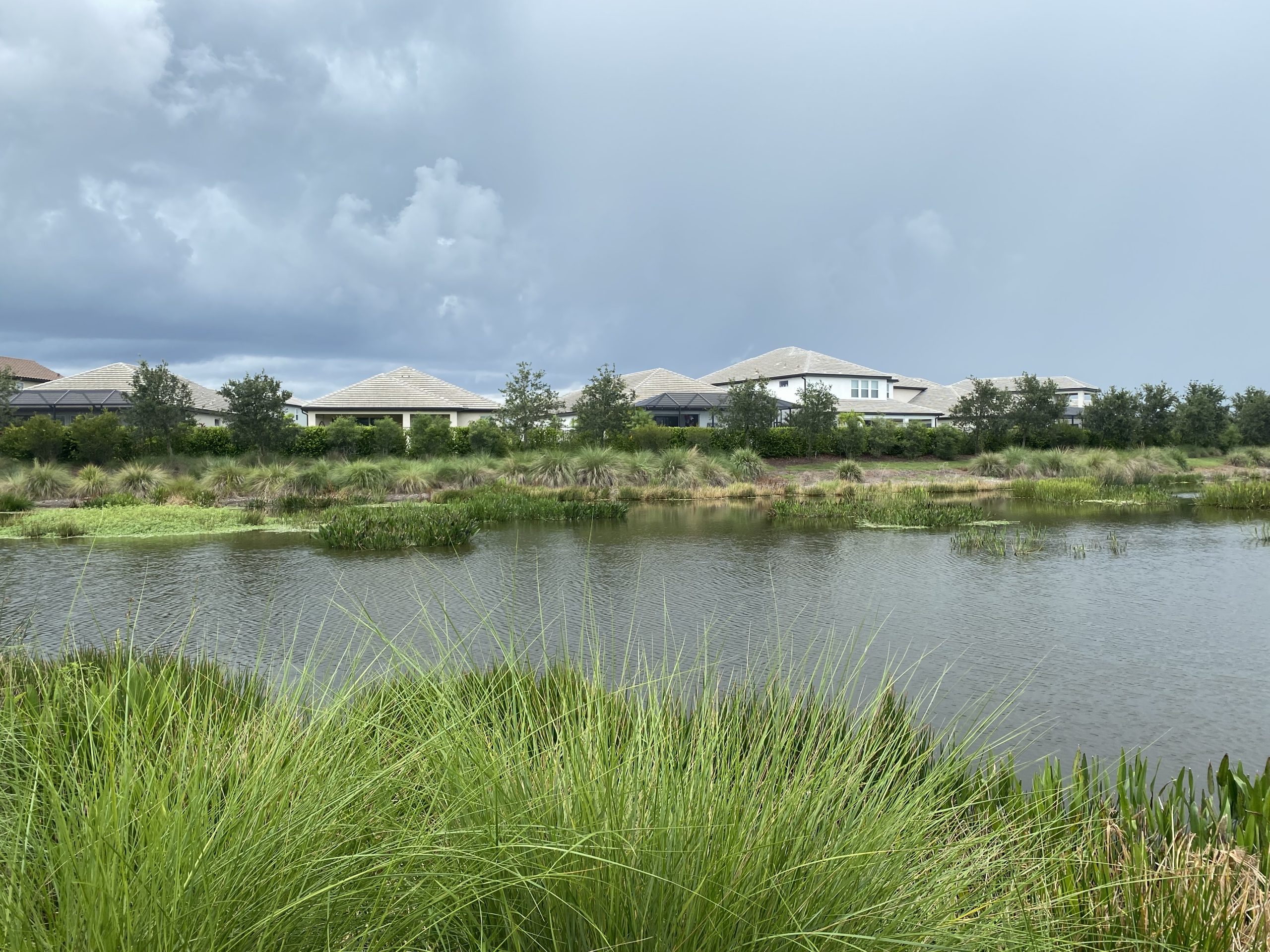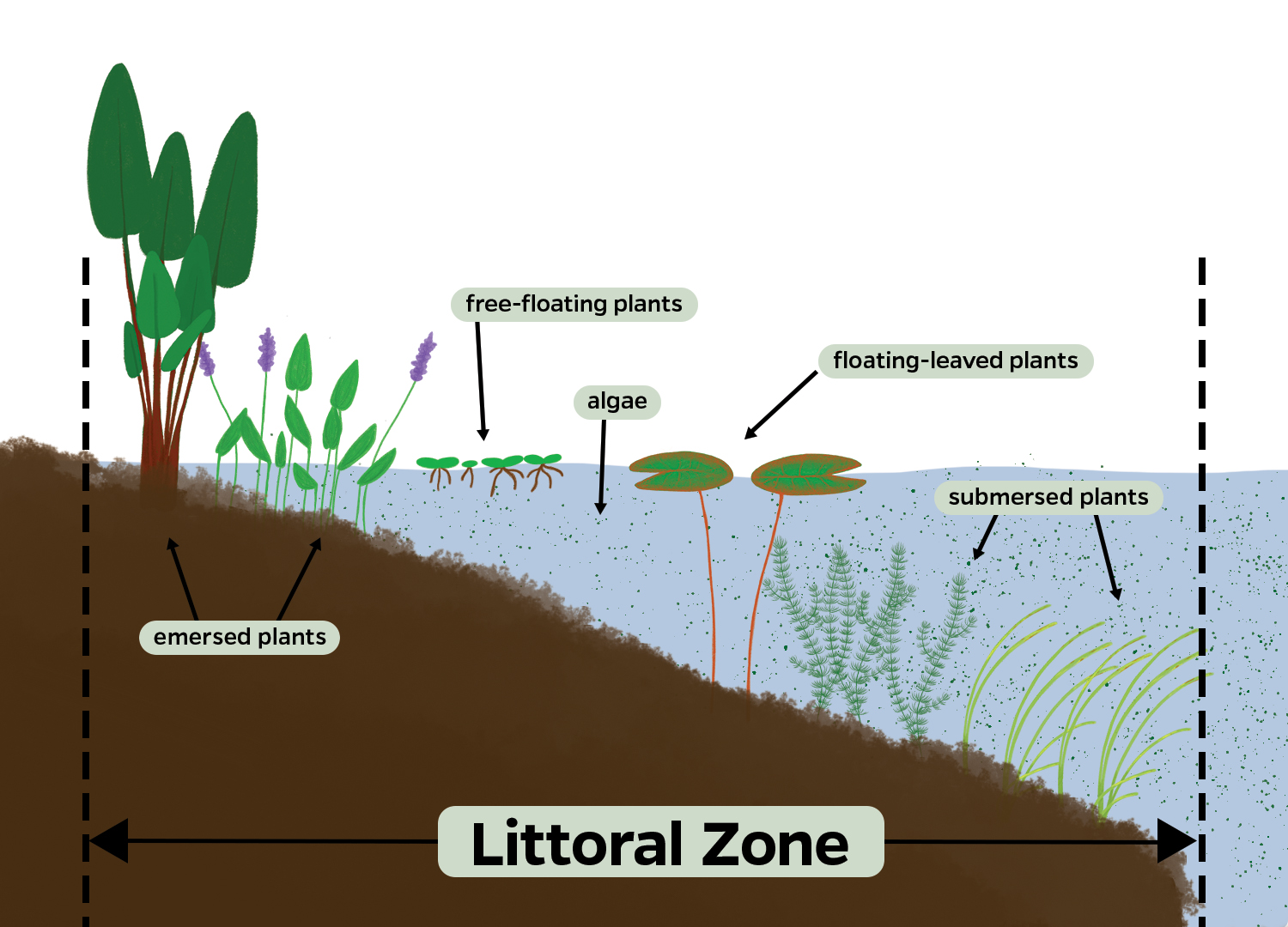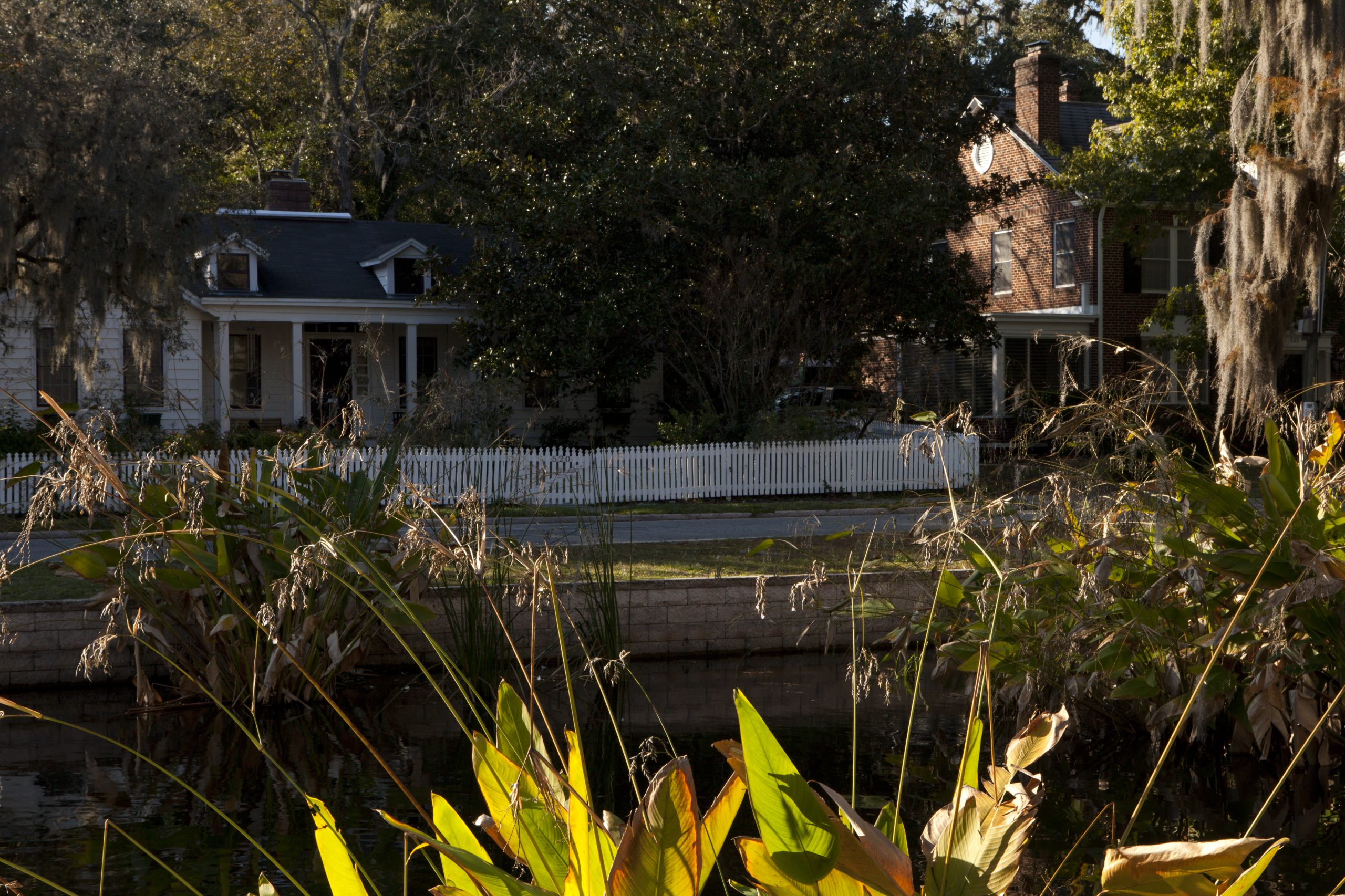Stormwater ponds are often the centerpiece of a neighborhood. Residents may spend their mornings walking along the pond, frequent the water to watch their favorite wading birds, or even see the pond right from their back window. With so many eyes on the water, changes in conditions and water quality can be quickly noticed and often cause concern for residents and communities. By changing action, adopting best management practices, and shifting our perspective, communities have many opportunities to benefit water quality within their ponds.
Think Holistically
Your community’s stormwater pond is a reflection of your neighborhood watershed. Stormwater ponds receive runoff from the surrounding area. Since runoff can pick up pollutants as it travels over the landscape, stormwater ponds can be directly impacted by activities throughout the neighborhood. When working to improve water quality, think about what may be happening in the surrounding area that could have the potential to impact water quality.
Are folks walking their dogs around the pond without pickup up the waste? Are grass clippings and other debris making their way into storm drains? Are residents over fertilizing? Are residents washing their cars on paved surfaces? How about irrigation, are you irrigating too much or allowing sprinklers to spray onto roadways? These are just some questions to ask when addressing water quality in your stormwater pond. Often the best approach is to think broadly and work with your community to make sustainable improvement wherever possible.

Increase Plant Cover
The shallow area of a pond where the water meets the land is referred to as the Littoral Zone. The shallow depth of this zone allows for the growth of native aquatic plants. Native aquatic plants can provide a host of benefits to your pond including shoreline protection, habitat value, oxygenation, and even pollutant removal. Consider increasing the plant coverage in your littoral zone with a variety of native aquatic plants. You can learn about littoral plants by reading Water Talk: Plants For Your Pond.

Add A Buffer Zone
Buffer Zones are low-maintenance areas around a stormwater pond intended to reduce impacts to the pond. Buffer Zones are often unmowed and can contain a variety of plants including native bunch grasses, wildflowers, and even some shrubs and trees. The look and design of a Buffer Zone can be adapted to fit community taste and preference. Buffer Zones can reduce the use of heavy lawn equipment along pond banks and can offer increased habitat value and bank soil stabilization. Tall plants in a buffer zone can also act as a physical barrier around your pond, intercepting pollutants like grass clippings, yard debris, and even plastic bags and bottles.

Shift Your Perspective
Sometimes water quality concerns in stormwater ponds are more so a matter of aesthetic preference than true water quality. Algae is a common concern among residents with stormwater ponds, and while algae may be unsightly to some it is a natural part of Florida’s aquatic ecosystem. When present in appropriate amounts, some algae may even provide ecological services. Algae that grows in excess, however, can be a sign that the pond system is out of balance.
Our community is fortunate to be home to residents who come from all over the country. Many of us may be familiar with ponds and lakes from the Northeast or the Midwest where water looks and behaves a bit differently than it does here in South Florida. Our unique environmental conditions can cause our water to be a colored, warm, and biologically productive. Understanding these differences is a helpful step in appreciating the natural beauty of Florida’s water resources.

 1
1
